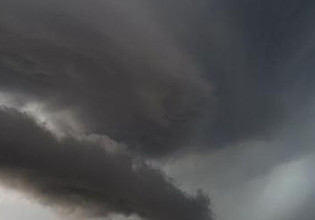October 2016 Vol. I No. IV
Not your ordinary poetry magazine!
If good coffee (or just the concept of coffee), great books, sharp wit, and great authors excite you, we are for you!

Haiku
Haiku’s subject matter is wide open and non-judgmental. There are no appropriate or non-appropriate topics. Typically, haiku journals abound with moonlit pine branches, the cry of the osprey, dragonflies perched on bamboo shoots, and the reflection of stars in a pond. But a poem could as readily address maggots wriggling in a trash heap as evening rain glistening on a banana leaf. In Zen terms, all phenomena are empty, empty of inherent self-existence, and, therefore all phenomena are equal.
Fat maggots wriggle
On the open trash can’s lid:
Late afternoon light.
I’d arrived home from work the afternoon of a garbage collection day. Trash barrels were lined up at the end of driveways in the residential driveway. Observe the maggots mindfully, with no aesthetic preference.
This tradition of seeing beauty in the decaying and in conditions that might to some be repulsive runs throughout Japanese classical haiku. Here is a piece from Matsuo Basho, considered the most masterful of all that nation’s poets. Note the R.H. Blyth translation does not artificially attempt to translate the piece using the accepted 5-7-5 syllable format.
Fleas, lice,
The horse pissing,
Near my pillow.
And here is an offering from Issa, another poet revered in Japan.
Poor louse!
I made it creep upon the fruit,
That tastes of my flesh.
“But with a little more familiarity, you realize that haiku poetry excels in one of the rarest artistic virtues, the virtue of knowing when to stop.” -Alan Watts
One more haiku, this to celebrate Taoist appreciation of Autumn.
Autumn equinox,
Balance between light and dark:
A blue dragonfly.
-K. McL
R.H. Blyth wrote, “Haiku is a way of returning to nature, our moon nature, our cherry blossom nature, our falling leaf nature, in short, to our Buddha nature. It is a way in which the cold winter rain, the swallows of evening, even the very day in its hotness, and the length of the night become truly alive, share in our humanity, speak their own silent and expressive nature.”
This month we have the wonderful fortune of having received five haiku written by Vera Ignatowitsch that embody the spirit Blyth described. I have read the poems several times, and admired them more with each reading. Individually, sublime. Together, they are a linked verse joining the seasons.
from charred stubs of wood
spirits of searing fire smile
free to stain paper
lacy veils of frost
pulse with sealing beauty
in winter’s living shroud
rivulets melting
into self made crevices
soak and unveil spring
the torn feather floats
in tune with a lullaby
weaving a new nest
the seminal ant
with crowning contribution
is the one you watch
-Vera Ignatowitsch
Publisher's note: Vera starts our Formal & Rhyming Poetry page this issue!
Senryu are a subset of haiku that tend to be concerned with human affairs. They tend to be humorous, ironic, and sometimes poignant. Here are some fine examples we recently received at BTS:
Inspiration fail.
Today is not going well.
I can’t think of a
-Sue Barnard
In the yard a plump bird hops
Through a window pane
My son learns the word Robin.
A white blossom quivering
How windy it is.
I hope the birds can keep warm.
Not so much brown as ochre,
The grass slowly dies.
At least I’ll not have to mow.
-Donovan Craig
I encourage all haiku writers to submit their work to the BTS haiku column. Share your experience of the inter-penetration of all things and your special images and insight with all of the BTS readers.
-Kevin McLaughlin
Haiku Editor


